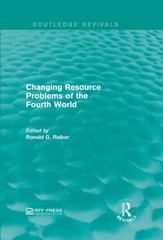1. (5 points) Assume that this is a simultaneous move one shot game, i.e., each player moves simultaneously, and the game is played once. Two firms compete by advertising, and you are given the profit matrix for the advertising game. The numbers in the table show the profit for each firm from each outcome Firm 2 Do Not Advertise Advertise Do Not 0 Advertise 2 0 Firm 1 2 1 Advertise (a) What is each firm's best response to its rival's possible actions? (i) If Firm 1 does not advertise what is Firm 2's best action? (ii) If Firm 1 advertises what is Firm2's best action? (iii) If Firm 2 does not advertise what is Firm 1's best action? (iv) If Firm 2 advertises what is Firm 1's best action? (b) What is Firm 1's dominant strategy (if they have one)? (c) What is Firm 2's dominant strategy (if they have one)? 2. (5 points) Assume that this is a simultaneous move, one shot game, i.e., each player moves simultaneously, and the game is played once. The two firms face the following profit matrix. The number in the table show the profit for each firm from each outcome Firm 2 Low Price High Price 0 2 Low Price 2 Firm 1 6 High Price 0 6 (a) What is the Nash equilibrium for this game? (b) If these two firms were able to collude (negotiate) what outcome would they settle on? (c) What is Firm 1's secure strategy? (d) What is Firm 2's secure strategy 3. (5 points) Refer to the following game. Player 2 tl 12 13 $1 4, 10 3,0 1. 3 Player 1 $2 0, 0 2, 10 10, 3 (a) What is Player 1's dominant strategy (if they have one)? (b) What is Player 2's dominant strategy (if they have one)? (c) For each of the following options please point out which options constitute a Nash equilibrium? A. $1, t1 B. $2, 12 C. $2, 13 U S1, 12 4. (5 points) Refer to the normal-form game of price competition in the payoff matrix below. Firm B Low Price High Price Low Price 0. 0 50, -10 Firm A High Price -10, 50 20, 20 Suppose the game is infinitely repeated, and the interest rate is 10 percent. Both firms agree to charge a high price, provided no player has charged a low price in the past. This collusive outcome will be implemented with a trigger strategy that states that if any firm cheats, then the agreement is no longer valid and each firm may make independent decisions. Will the trigger strategy be effective in implementing the collusive agreement? Please explain and show all necessary calculations







